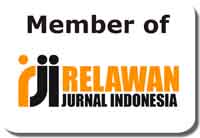Facilitating EFL Students in Maintaining Flow of Talks Using Mind Mapping
Abstract
This case study discussed the use of mind mapping in sustaining the EFL students’ flow of talks. Mind mapping was utilized to assist the participants in generating ideas, retaining vocabulary, making notes and tasks, and providing clear progress for presentations or talks. After mind mapping was introduced, the participants were asked to talk. They were also interviewed to obtain their general sense of how much mind mapping has contributed to maintaining the flow of their talks. These data were then analyzed qualitatively through the following stages: familiarizing with the data; generating initial codes; searching for themes; reviewing themes; defining and naming themes, and producing the report. The findings revealed that participants could sustain the entire talk, particularly the introduction and body as opposed to the conclusion. As for the conclusion, one did not use it at all in the first and second talks. This was primarily because such a student has a poor cognition process. Since mind mapping has had profound benefits to the target learners and the teachers, such as it could aid the desire to read, and uplift the competence of generating and organizing ideas. Explore its application in the teaching and learning process to maintain the flow of the talks is highly recommended.
Keywords
Full Text:
PDFReferences
Al-Jarf, R. (2011). Teaching spelling skills with mind-mapping software. Journal of Professional Teaching Articles, 53(1), 4-16.
Astriani, D., Susilo, H., Suwono, H., Lukiati, B., & Purnomo, A. R. (2020). Mind mapping in learning models: A tool to improve student metacognitive skills. International Journal of Emerging Technologies in Learning, 15(6), 4–17. https://doi.org/10.3991/IJET.V15I06.12657
Braun, V., & Clarke, V. (2006). Qualitative research in psychology using thematic analysis in psychology using thematic analysis in psychology. Qualitative Research in Psychology, 3(2), 77–101. Retrieved from http://www.tandfonline.com/action/journalInformation?journalCode=uqrp20%5Cnhttp://www.tandfonline.com/action/journalInformation?journalCode=uqrp20
Buran, A., & Filyukov, A. (2015). Mind mapping technique in language learning. Procedia - Social and Behavioral Sciences, 206(November), 215–218. https://doi.org/10.1016/j.sbspro.2015.10.010
Buzan, T. (1990). Use both sides ofyour brain. New York: Plume Publishers.
Buzan, T. (1994). The mind map book: How to use radiant thinking to maximize your brain’s untapped potential. New York: Dutton.
Bystrova, T., & Larionova, V. (2015). Use of virtual mind mapping to effectively z organize the project activities of students at the university. Procedia - Social and Behavioral Sciences, 214(June), 465–472. https://doi.org/10.1016/j.sbspro.2015.11.724
Creswell, J. W. (2014). Research design: qualitative, quantitative, and mixed methods approaches (4th ed.). United Kingdom: SAGE.
Iskandar, S. M. (2014). Pendekatan keterampilan metakognitif dalam pembelajaran sains di kelas. Erudio Journal of Educational Innovation, 2(2), 13–20. https://doi.org/10.18551/erudio.2-2.3
Johnson, A., & Heffernan, N. (2006). The short readings project: A call reading activity utilizing vocabulary recycling. Computer Assisted Language Learning, 19(1), 63–77. https://doi.org/10.1080/09588220600804046
Kazemi, A., & Moradi, A. (2019). The influence of concept mapping and rehearsal on speaking accuracy and complexity. Cogent Arts and Humanities, 6(1), 1–21. https://doi.org/10.1080/23311983.2019.1597463
Leeds, A. J., Kudrowitz, B., & Kwon, J. (2019). Mapping associations: exploring divergent thinking through mind mapping. International Journal of Design Creativity and Innovation, 7(1–2), 16–29. https://doi.org/10.1080/21650349.2018.1463178
Lestari, Rahayu, Wibowo, M. E., A. (2020). Group guidance of mind mapping to improve critical thingking skills. Jurnal Bimbingan Konseling.
Liu, T., & Yuizono, T. (2020). Mind mapping training’s effects on reading ability: detection based on eye tracking sensors. Sensors (Switzerland), 20(16), 1–16. https://doi.org/10.3390/s20164422
Musa, F., Mansor, A. Z., Mufti, N., Abdullah, N. A., & Kasim, F. D. (2012). negotiation skills: Teachers’ feedback as input strategy. Procedia - Social and Behavioral Sciences, 59, 221–226. https://doi.org/10.1016/j.sbspro.2012.09.268
Nikhilkumar D. P. (2016). Effectiveness of teaching through mind mapping technique. International Journal of Indian Psychology, 3(3). https://doi.org/10.25215/0303.054
Paxman, C. G. (2011). Map your way to speech success! Employing mind mapping as a speech preparation technique. Communication Teacher, 25(1), 7–11. https://doi.org/10.1080/17404622.2010.513994
Pennebaker, J. W. (2017). Mind mapping: Using everyday language to explore social & psychological processes. Procedia Computer Science, 118, 100–107. https://doi.org/10.1016/j.procs.2017.11.150
Pramono, S. A. (2013). The use of mind mapping to improve the speaking ability of grade VIII students in the academic year of 2012/ 2013. English Language Teaching Journal, 2(10), 6-10.
Wu, H. Z., & Wu, Q. T. (2020). Impact of mind mapping on the critical thinking ability of clinical nursing students and teaching application. Journal of International Medical Research, 48(3). https://doi.org/10.1177/0300060519893225
DOI: http://dx.doi.org/10.31332/lkw.v0i0.3579
Copyright (c) 2022 Abdul Halim

This work is licensed under a Creative Commons Attribution-ShareAlike 4.0 International License.
Langkawi: Journal of The Association for Arabic and English indexed by:


















.png)
.png)

.png)
2.png)








